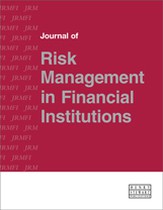Using truncated Lévy flight to estimate downside risk
Abstract
It is well known that the normal distribution model fails to describe the fat tails of markets. The Lévy stable distribution model, meanwhile, has fat tails but leads to an infinite variance, thus complicating risk estimation. This study introduces truncated Lévy flight (TLF) — a better distribution model that has fat tails, finite variance, and more importantly, scaling properties. The paper uses TLF to estimate the downside risk of a variety of asset classes. The downside risk measure used is the conditional value-at-risk (CVaR). The study shows that the lognormal model can underestimate the monthly CVaR by 2.27 per cent for the S&P 500 Index, 0.48 per cent for the US Long-Term Government Bond Index, and 1.16 per cent for the MSCI UK Equity Index. Moreover, the paper extends a univariate TLF model to a multivariate TLF model to study the impact of fat tails on portfolios' downside risk and wealth accumulation.
The full article is available to subscribers to the journal.
Author's Biography
James X. Xiong is a senior research consultant at Ibbotson Associates, a Morningstar company, in Chicago, Illinois.
Citation
Xiong, James X. (2010, June 1). Using truncated Lévy flight to estimate downside risk. In the Journal of Risk Management in Financial Institutions, Volume 3, Issue 3. https://doi.org/10.69554/LRYV9508.Publications LLP
